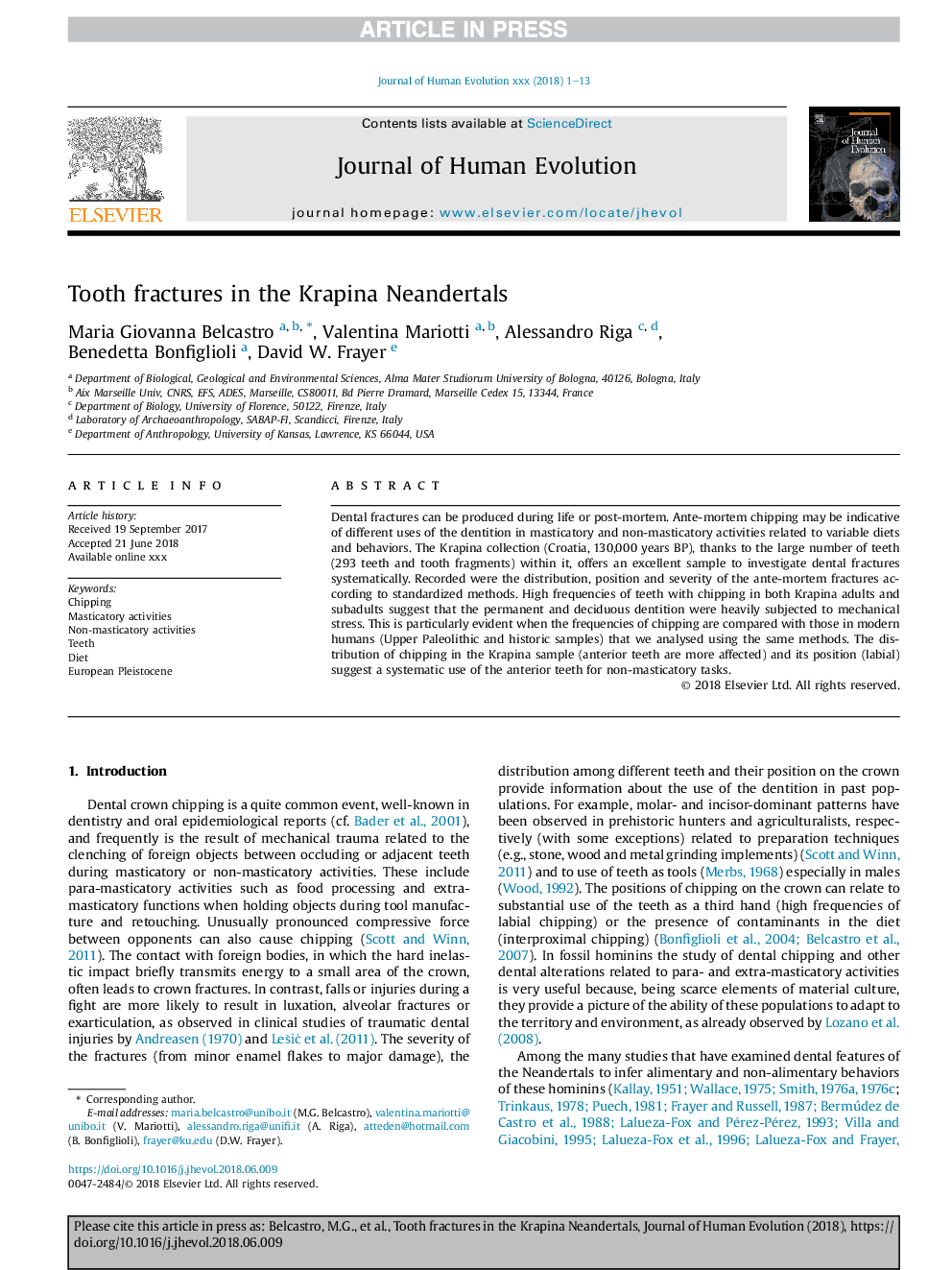| Article ID | Journal | Published Year | Pages | File Type |
|---|---|---|---|---|
| 8959447 | Journal of Human Evolution | 2018 | 13 Pages |
Abstract
Dental fractures can be produced during life or post-mortem. Ante-mortem chipping may be indicative of different uses of the dentition in masticatory and non-masticatory activities related to variable diets and behaviors. The Krapina collection (Croatia, 130,000 years BP), thanks to the large number of teeth (293 teeth and tooth fragments) within it, offers an excellent sample to investigate dental fractures systematically. Recorded were the distribution, position and severity of the ante-mortem fractures according to standardized methods. High frequencies of teeth with chipping in both Krapina adults and subadults suggest that the permanent and deciduous dentition were heavily subjected to mechanical stress. This is particularly evident when the frequencies of chipping are compared with those in modern humans (Upper Paleolithic and historic samples) that we analysed using the same methods. The distribution of chipping in the Krapina sample (anterior teeth are more affected) and its position (labial) suggest a systematic use of the anterior teeth for non-masticatory tasks.
Related Topics
Life Sciences
Agricultural and Biological Sciences
Ecology, Evolution, Behavior and Systematics
Authors
Maria Giovanna Belcastro, Valentina Mariotti, Alessandro Riga, Benedetta Bonfiglioli, David W. Frayer,
